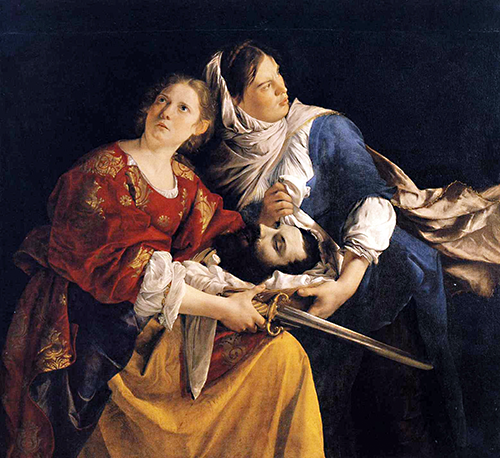Undergraduate Seminar:
Heroes, Heroines, and Sinners of the Bible in Art: Michelangelo, Rembrandt, and Others

The course examines the impact of the Hebrew Bible upon art principally in the early modern period, but with comparisons to interpretations of the modern period. This class will compare visual interpretations of biblical themes by such famous artists as Michelangelo, Raphael, Dürer, Caravaggio, Rembrandt, etc., including Dutch and Italian women artists, and the creators of Jewish art. We will investigate sculpture, painting, and prints. A major focus will be the study of biblical text and its commentaries by such Jewish and Christian writers as Augustine and Jerome; the rabbinic writers Maimonides and Rashi; and the early modern commentators Luther, Erasmus, and Calvin. Of special interest are biblical feminist writers which includes Elaine Pagels, Diane Russell, and Frymer Krinsky among others.
Issues of gender and power are a major focus of our studies. The course will examine such themes as: Adam and Eve; Abraham and Isaac; Jacob and Esau; Joseph and his Brothers; Samson; David as shepherd and king. We will examine issues of masculinity, and will especially probe the roles of women in biblical history such as Eve, Sarah, Hagar, Rebecca, the Woman of Timnath, Delilah, Dinah, Potiphar's wife, Bathsheba, Sheba, Esther, Susannah (Apocrypha), and Judith (of the Apocrypha). Students will compare treatments of the same subject in the art of Italy, the Southern Netherlands, Holland, Germany, United States, and modern Israel. In every case the works of art will be studied within the historical and religious context of the period in which they were created.
We shall study early modern, illustrated Bibles in Special Collections at the Harlan Hatcher Library. The collection is rich and offers the opportunity to compare illustrations and commentaries in different Bibles created within diverse contexts.
We will examine key narratives of the Hebrew Bible within the visual tradition.
Students will analyze text in conjunction with images, and will study visual material within the framework of varied methodologies, including gender, formalist, and contextual, etc. Fieldtrips to the University of Michigan Museum of Art (required) will enable students to study original works of art dealing with biblical themes. The course will demonstrate that works of art are themselves a document of history and culture, offering insights on religious culture, history, women's studies, and, of course, the history of art. Students will discover the continued relevance and reinterpretation of the Hebrew Bible in European art in the early modern period and also modern times.